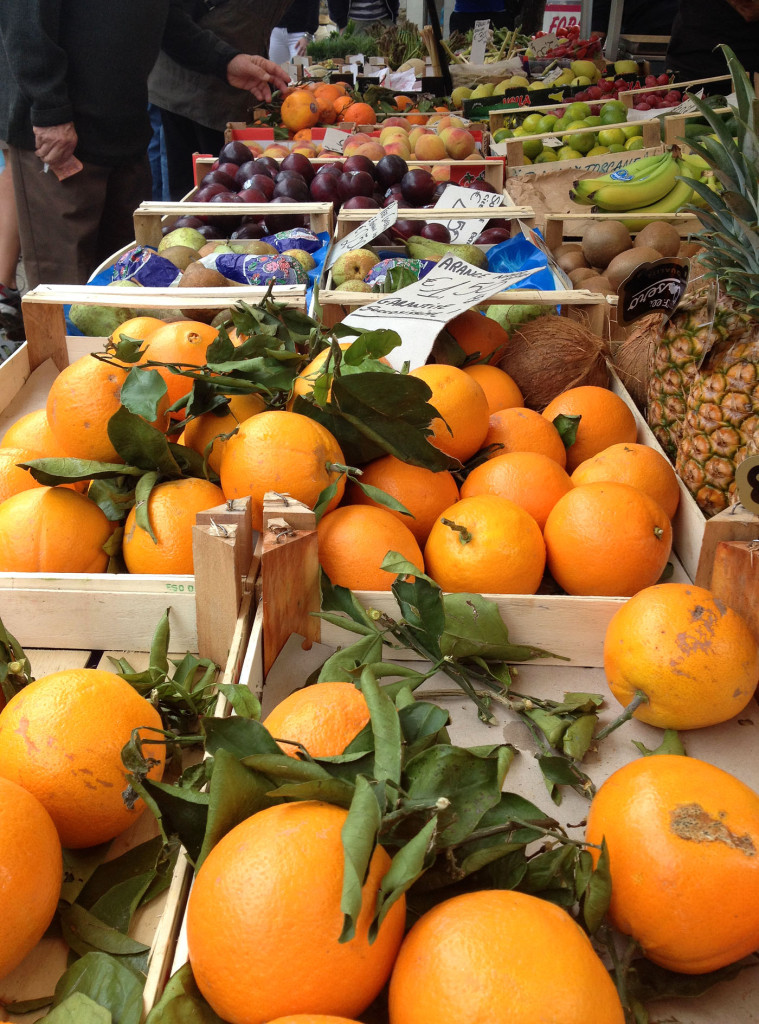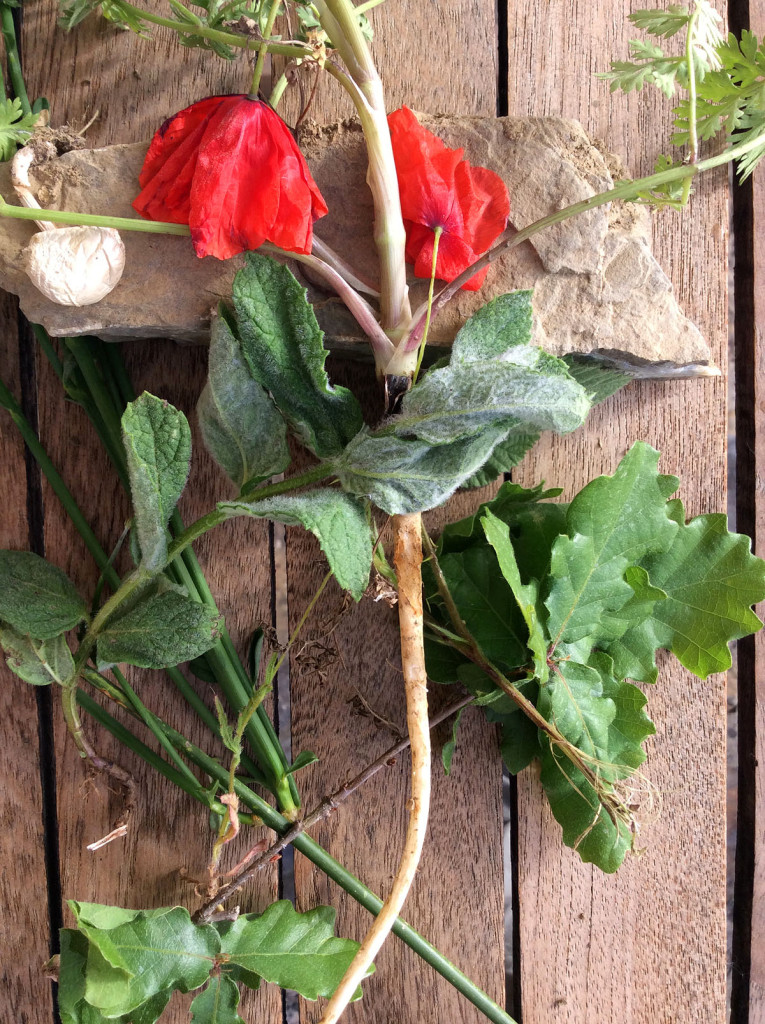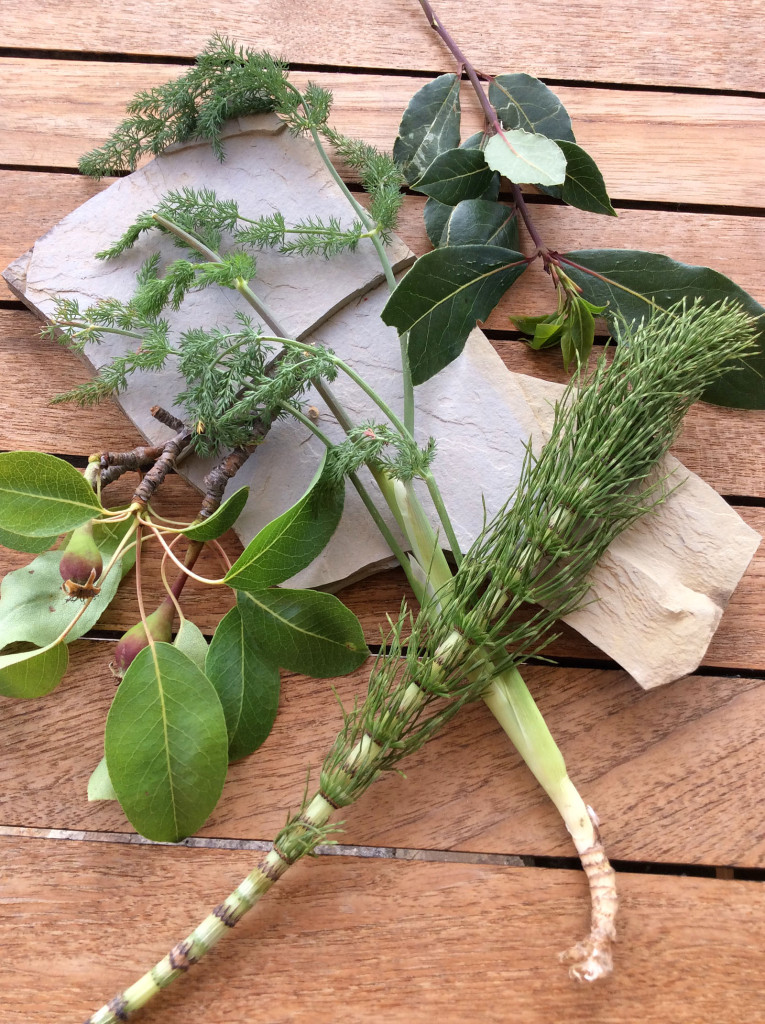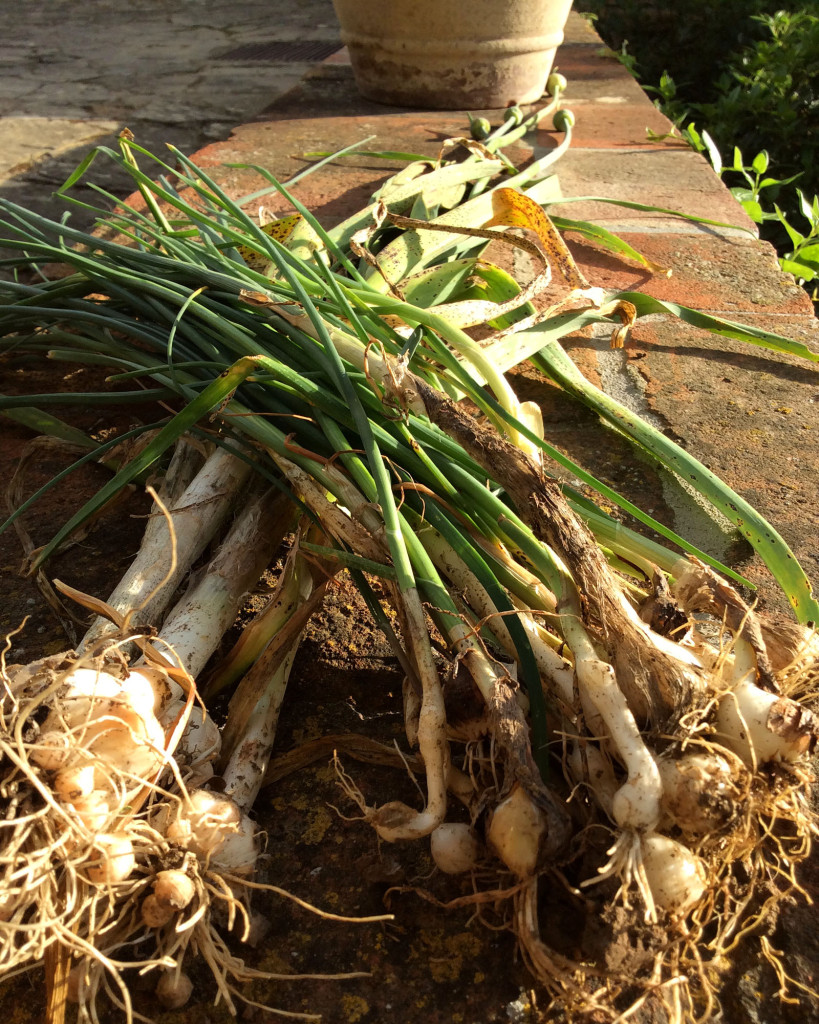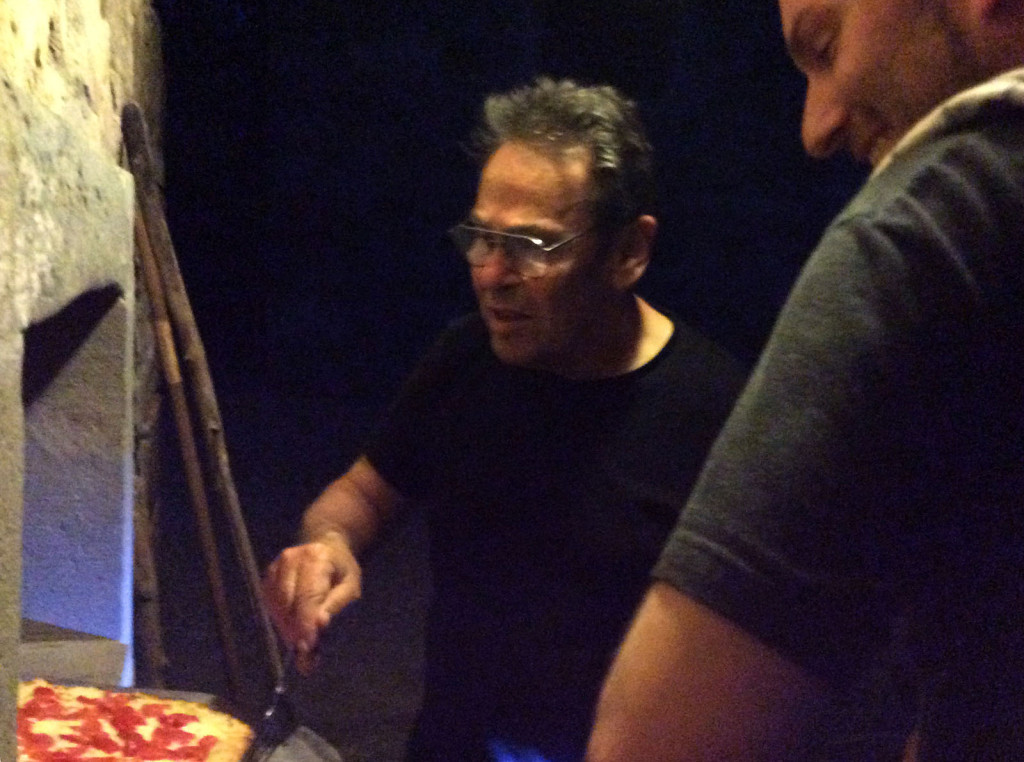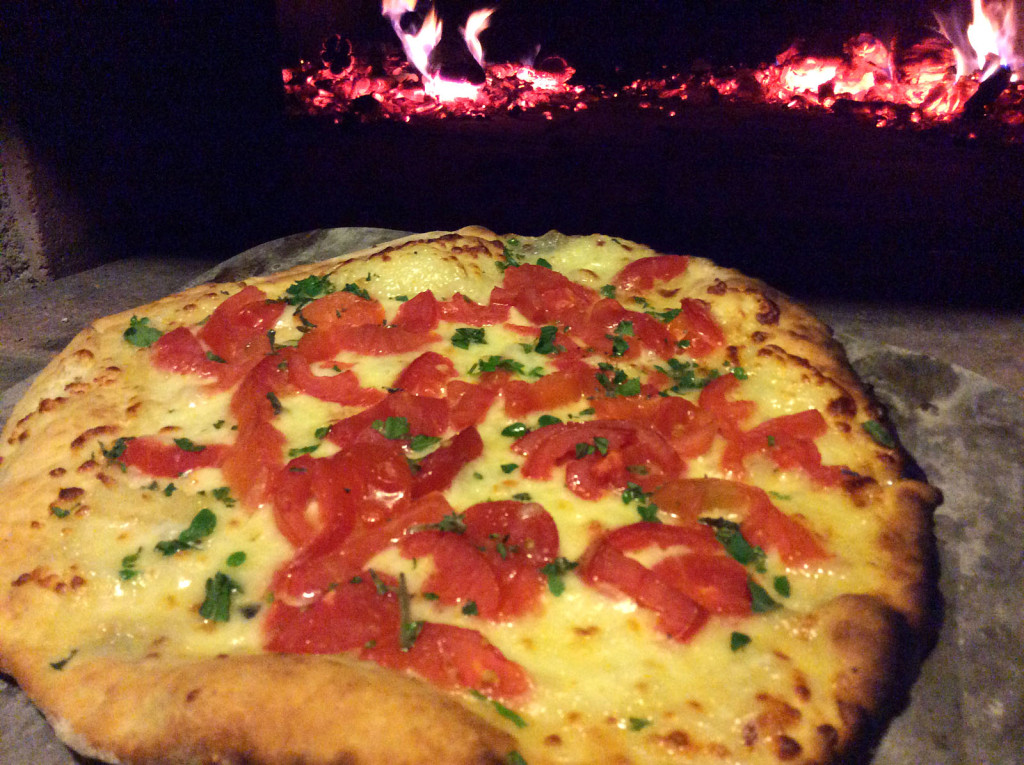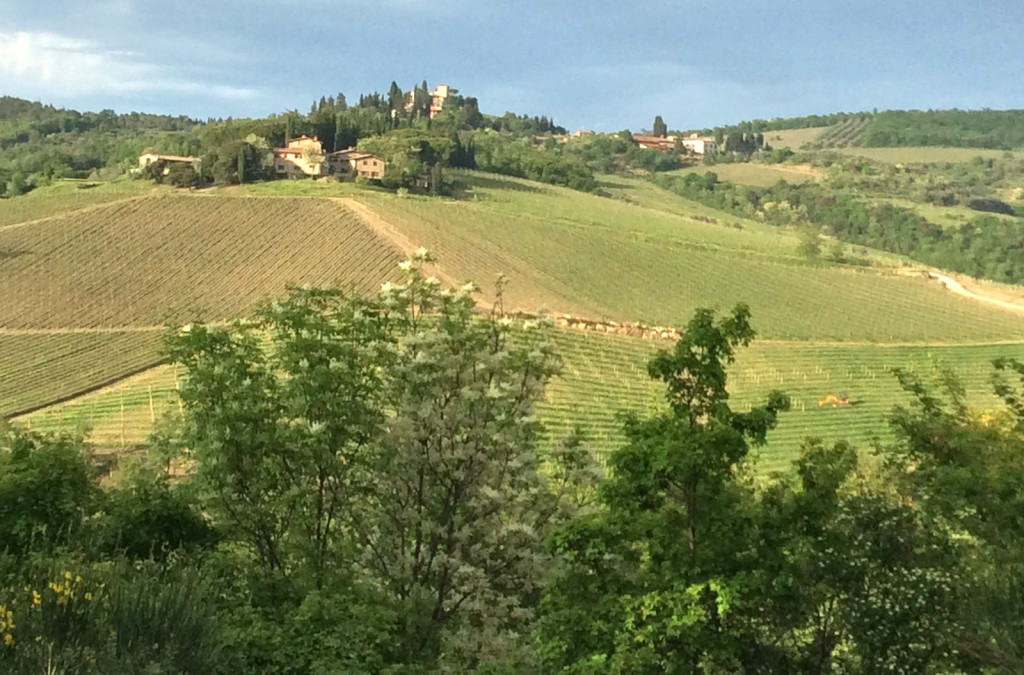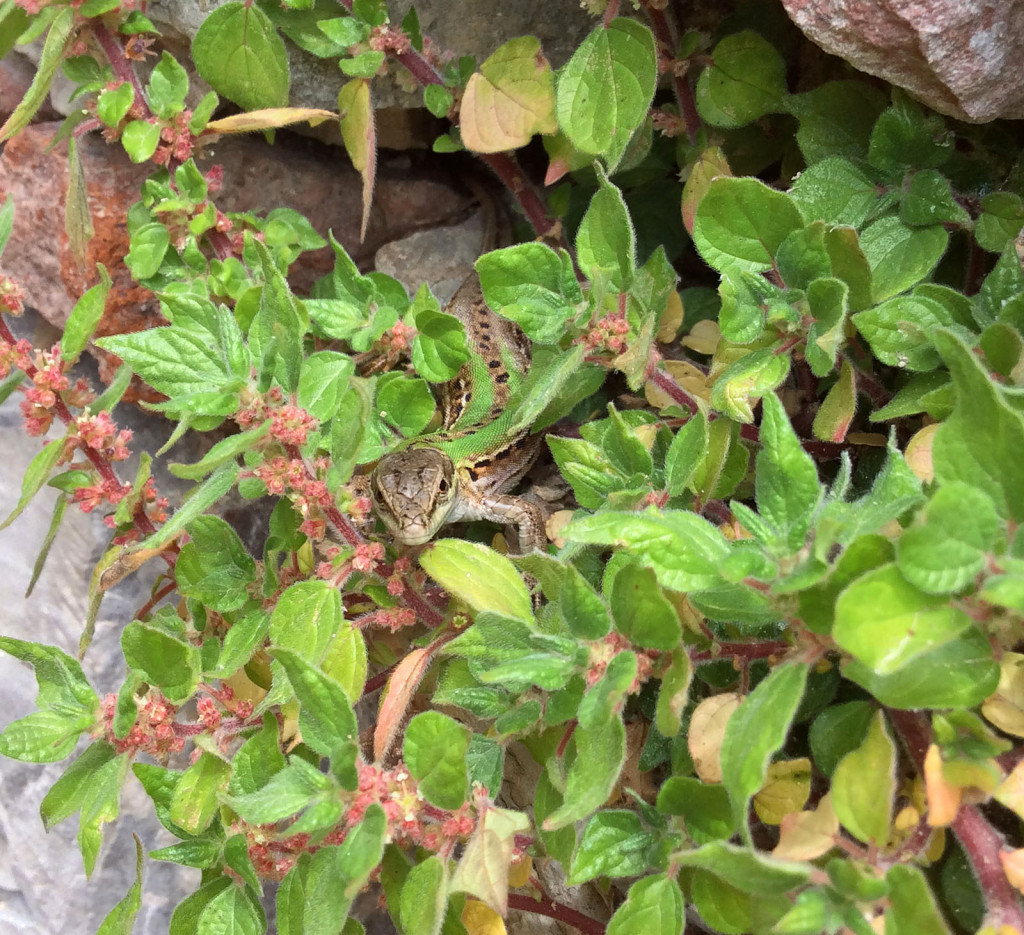My family has Italian heritage, and to celebrate a certain milestone we took a trip to the old country. Tuscany, in this case. I had been to many parts of Italy but this was my first trip to the Tuscan countryside. It’s pretty amazing to go to a place that looks just like it does in postcards and in old oil paintings. Around every turn was another rolling vista of olive groves and vineyards. The sound carried so far that we could catch snippets of conversation from that house in the righthand distance.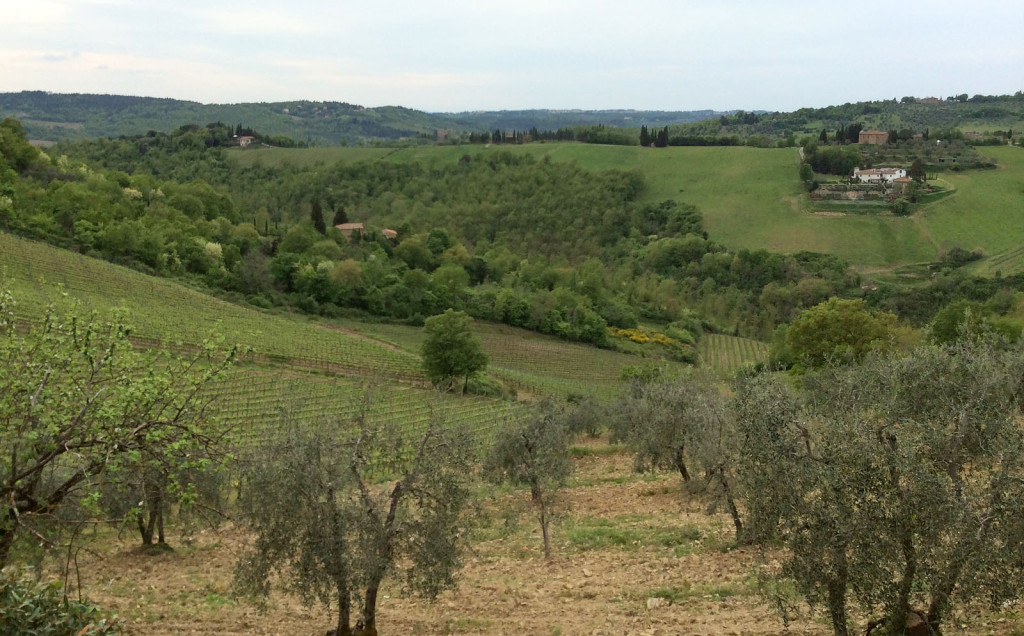
At a farmer’s market in Chianti, we saw some familiar veggies. They all looked like they were popping right out of their crates. I asked about one green I’d never seen before. Called Aggretti, it’s a local delicacy. Apparently it took England by storm a few years ago. We bought some, cooked it up. Good stuff. My uncle found some seeds back in Vermont and was able to grow a few despite the dramatic difference in climate.
Every single turn in the road looked like this. And the road had a lot of turns.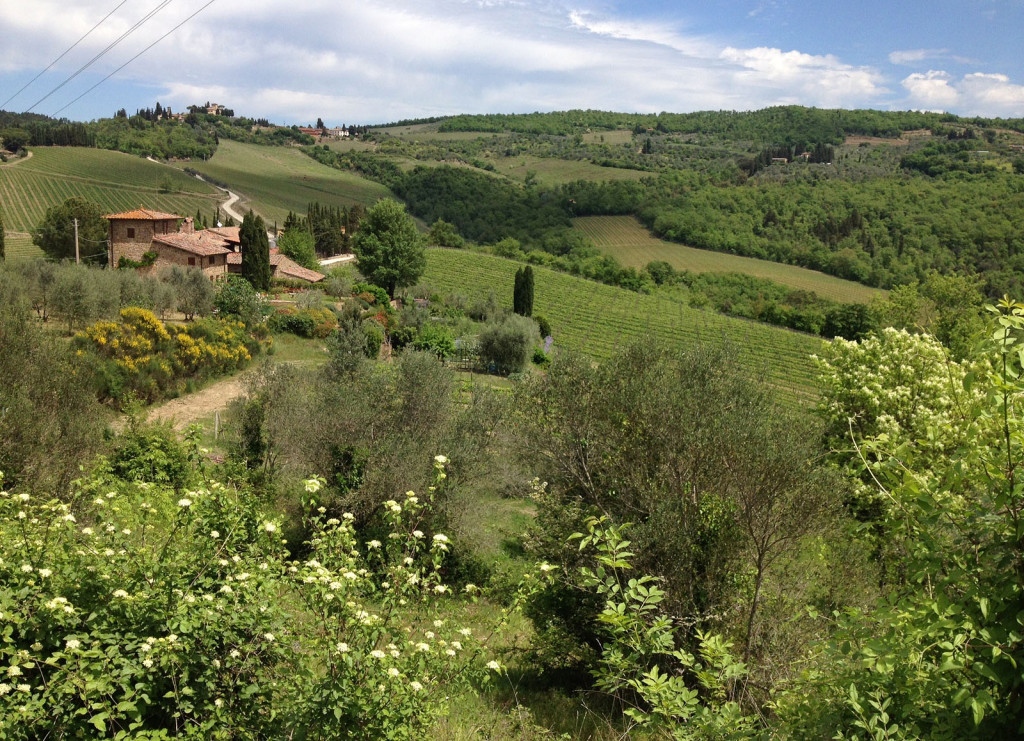
As the local discotheque was hours away, I took it upon myself to go for a stroll around the property every day and see what I could find. On this day, I found wild figs, olive trees, oak, willow, cypress, and acacia.
Painters talk about the quality of light. I noticed this when I lived in San Francisco– something about the way the afternoon light broadsided a row of houses at the top of the hill was spectacular. Maybe it’s something about hills, but the quality of light in Tuscany was like nothing I have seen before. It puts that west coast light to shame. These are some of the best photos I’ve taken, and I was just freehanding them with an iPad. The light was as much the subject as the subject.
The next day it was poppies wilting in the sun, along with wild carrot, more oak, some kind of primeval reed, some fuzzy mintlike thing, a piece of loose slate, and even a lone mushroom drying in the sun.
Next up it was bay laurel, wild fennel, lemon or lime, and another even more primeval reed from before the age of dinosaurs.
Th next day it was more olive branches, grapevines, a similar vetch to the cover crop I’m using, rock-hard Tuscan claylike soil, and vine charcoal– the same kind you’d buy in an art supply store… only this time the remnants of trimmings that were burned by the farmhands.
I regularly found wild garlic as well. Most of it was about a foot tall at best, with a bulb the size of a pea. Near the parking lot of an old castle, I found more of it– this time five feet tall with big plump bulbs.
It would go on the pizzas we made that night, in the pizza oven built into the side of the old stone garage.
Another rolling hillside. I learned from some well-informed friends that there is has been a big scare in the olive oil industry in Italy this year. The climate has warmed so much that a certain fly is able to survive the cold season which usually kills its population off, and it’s destroying olive fruit up and down the countryside. The harvest is supposed to be dismal, and the government is ordering millions of ancient trees destroyed as a bulwark against the spread of the insect plague. Farmers are up in arms. So far, Tuscany had not been badly hit at the time of our visit.
On another stroll, found a friendly bejeweled local hanging out in the shade.
It was a lovely trip. Lots of good food and good wine. The foraging was a nice way to connect with the land on this trip. For the life of me, I do not understand how the roots of any plant can penetrate that soil, but clearly they are doing something right around there.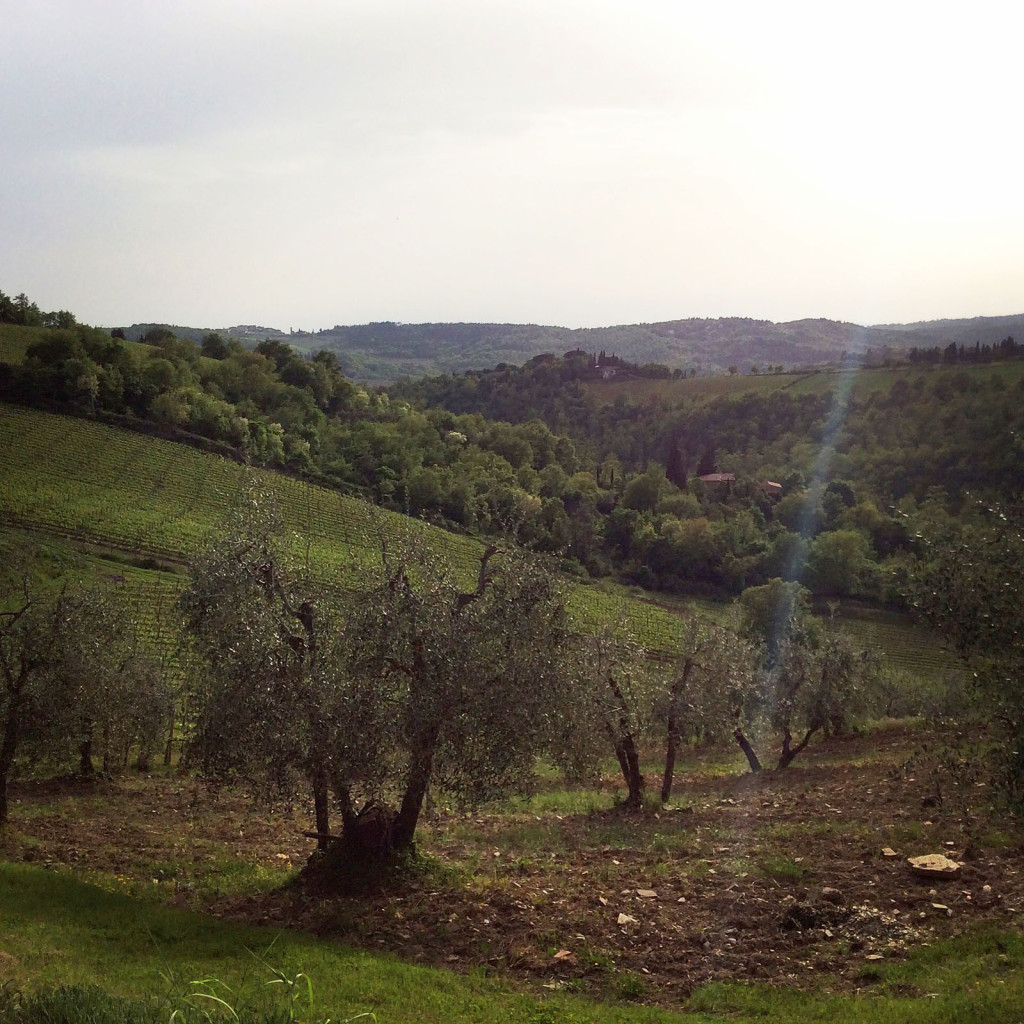
I looked forward to returning back home to the love of my life, and our newly planted garden.

